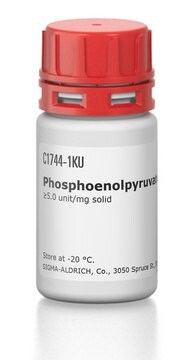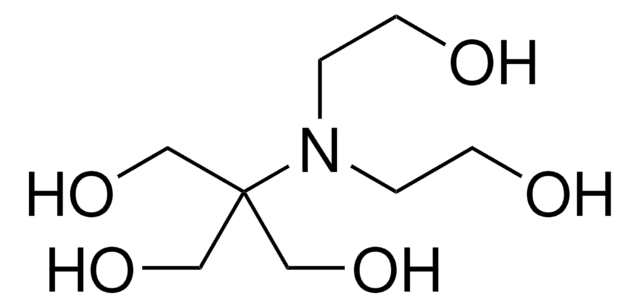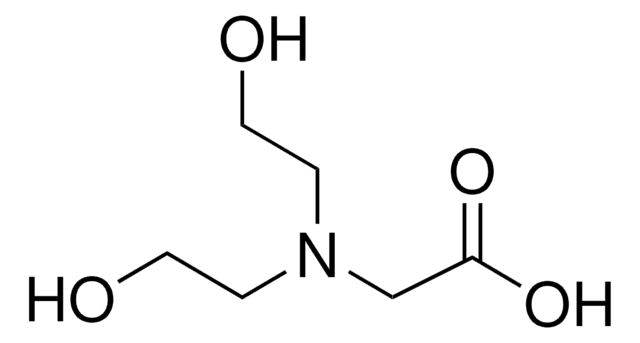RES3077T-A7
Tricina
Fabricação farmacêutica
Sinônimo(s):
N-[Tris(hidroximetil)metil]glicina
About This Item
Produtos recomendados
fonte biológica
synthetic
Nível de qualidade
Formulário
powder
técnica(s)
cell culture | mammalian: suitable
Impurezas
Endotoxin, microbial, and trace metals; tested
faixa de pH útil
7.4-8.8
pKa (25 °C)
8.1
adequação
suitable for manufacturing use
atividade externa
Cytotoxicity, DNase, NICKase, RNase, and Protease; tested
cadeia de caracteres SMILES
OCC(CO)(CO)NCC(O)=O
InChI
1S/C6H13NO5/c8-2-6(3-9,4-10)7-1-5(11)12/h7-10H,1-4H2,(H,11,12)
chave InChI
SEQKRHFRPICQDD-UHFFFAOYSA-N
Procurando produtos similares? Visita Guia de comparação de produtos
Descrição geral
M-Clarity Program
Buffer quality is vital for the success of biopharmaceutical processes, because buffers are indispensable in nearly every production step.
Our broad portfolio of buffer materials manufactured under appropriate controls is tailored to your needs. Ranging from non-GMP grades for low-risk application, to IPEC-PQG GMP for higher-risk applications, we have products covering all your manufacturing needs.
Aplicação
Tricine can be used in a wide array of biological applications including as a component in media formulations. Specific applications include buffers for electrophoresis, protein purification and diagnostic reagent production.
Embalagem
RES3077T-A701X: 100 gm container
RES3077T-A702X: 1 kg container
RES3077T-A704X: 10 kg container
RES3077T-A705X: 25 kg container
Informações legais
substituído por
Código de classe de armazenamento
13 - Non Combustible Solids
Classe de risco de água (WGK)
WGK 3
Ponto de fulgor (°F)
Not applicable
Ponto de fulgor (°C)
Not applicable
Escolha uma das versões mais recentes:
Já possui este produto?
Encontre a documentação dos produtos que você adquiriu recentemente na biblioteca de documentos.
Os clientes também visualizaram
Nossa equipe de cientistas tem experiência em todas as áreas de pesquisa, incluindo Life Sciences, ciência de materiais, síntese química, cromatografia, química analítica e muitas outras.
Entre em contato com a assistência técnica






